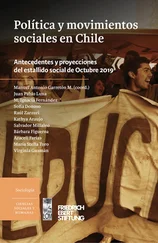Häussermann V, Acevedo J, Försterra G, Bailey M, Aguayo-Lobo A (2013). Killer whales in Chilean Patagonia: additional sightings, behavioural observations, and individual identifications. Revista de Biología Marina y Oceanografía 48:73-85.
Hayes LD, Chesh AS, Castro RA, Ortiz Tolhuysen L, Burger JR, Bhattacharjee J, Ebensperger LA (2009) Fitness consequences of group living in the degu Octodon degus , a plural breeder rodent with communal care. Animal Behaviour 78:131-139.
Hector DP (1986). Cooperative hunting and its relationship to foraging success and prey size in an avian predator. Ethology 73:247-257.
Heithaus MR, Dill LM (2002). Food availability and tiger shark predation risk influence bottlenose dolphin habitat use. Ecology 83:480-491.
Herczeg G, Gonda A, Merilä J (2009). The social cost of shoaling covaries with predation risk in nine-spined stickleback, Pungitius pungitius , populations. Animal Behaviour 77:575-580.
Herrmann T, Costina, MI, Costina AM (2010). Roost sites and communal behavior of Andean condors in Chile. Geographical Review 100:246-262.
Hill RA, Dunbar RIM (1998). An evaluation of the roles of predation rate and predation risk as selective pressures on primate grouping behaviour. Behaviour 135:411-430.
Hoare DJ, Ruxton GD, Godin JGJ, Krause J (2000). The social organization of free ranging fish shoals. Oikos 89:546-554.
Hoelzel AR (1991). Killer whale predation on marine mammals at Punta Norte, Argentina; food sharing, provisioning and foraging strategy. Behavioral Ecology and Sociobiology 29:197-204.
Holekamp KE, Strauss ED (2016). Aggression and dominance: an interdisciplinary overview. Current Opinion in Behavioral Sciences 12:44-51.
Hoogland JL (1981). The evolution of coloniality in white-tailed and black-tailed prairie dogs (Sciuridae: Cynomys leucurus and C. ludovicianus ). Ecology 62:252-272.
Hoogland JL (1995). The black-tailed prairie dog: social life of a burrowing mammal . Chicago University Press, Chicago, Estados Unidos de América.
Hultgren K, Duffy JE, Rubenstein DR (2017). Sociality in shrimps. Pp. 224-249, en: Comparative social evolution (Rubenstein DR, Abbot P, eds.). Cambridge University Press, Cambridge, Reino Unido.
Hunt JH, Toth AL (2017). Sociality in wasps. Pp. 84-123, en: Comparative social evolution (Rubenstein DR, Abbot P, eds.). Cambridge University Press, Cambridge, Reino Unido.
Iannacone J, Villegas W, Calderón M, Huamán J, Silva-Santiesteban M, Alvariño L (2012). Patrones de comportamiento diurno de huerequeque Burhinus superciliaris en hábitats modificados de la costa central del Perú. Acta Zoológica Mexicana 28:507-524.
Iñíguez MA (2001). Seasonal distribution of killer whales ( Orcinus orca ) in northern Patagonia, Argentina. Aquatic Mammals 27:154-161.
Ippi S, Trejo A (2003). Dinámica y estructura de bandadas mixtas de aves en un bosque de lenga ( Nothofagus pumilio ) del noroeste de la Patagonia argentina. Ornitología Neotropical 14:353-362.
Ippi S, van Dongen WF, Lazzoni I, Venegas CI, Vásquez RA (2013). Interpopulation comparisons of antipredator defense behavior of the thorn-tailed rayadito ( Aphrastura spinicauda ). Ethology 119:1107-1117.
Ippi S, van Dongen WF, Lazzoni I, Vásquez RA (2017). Shared territorial defence in the suboscine Aphrastura spinicauda . Emu-Austral Ornithology 117:97-102.
Iranzo EC, Wittmer HU, Traba J, Acebes P, Mata C, Malo JE (2018). Predator occurrence and perceived predation risk determine grouping behavior in guanaco ( Lama guanicoe ). Ethology 1 24:281-289.
Iriarte A (2008). Mamíferos de Chile . Lynx Edicions, Barcelona, España, 420 pp.
Iriarte A, Araya S, Contreras A, Correa C, Pino R, Segura B, Sepúlveda C, Tirado M, Venegas AM, Zúñiga J (2015). Guía de fauna silvestre de Chile . Ediciones COLBUN S.A. y Flora y Fauna Limitada, 148 pp.
Iturra-Cid M, Ortiz JC, Ibargüengoytía NR (2010). Age, size, and growth of the Chilean frog Pleurodema thaul (Anura: Leiuperidae): latitudinal and altitudinal effects. Copeia 2010:609-617.
Jaeggi AV, Gurven M (2013). Reciprocity explains food sharing in humans and other primates independent of kin selection and tolerated scrounging: a phylogenetic meta-analysis. Proceedings of the Royal Society of London B: Biological Sciences 280:20131615.
Jaramillo E, De La Huz R, Duarte C, Contreras H (2006). Algal wrack deposits and macroinfaunal arthropods on sandy beaches of the Chilean coast. Revista Chilena de Historia Natural 79:337-351.
Jarvis JUM, Sale JB (1971). Burrowing and burrow patterns of East African mole-rats Tachyoryctes, Heliophobius and Heterocephalus . Journal of Zoology 163:451-479.
Jarvis JUM, O’Riain MJ, Bennett NC, Sherman PW (1994). Mammalian eusociality: a family affair. Trends in Ecology & Evolution 9:47-51.
Jesseau SA, Holmes WG, Lee TM (2009). Communal nesting and discriminative nursing by captive degus, Octodon degus . Animal Behaviour 78:1183-1188.
Jiménez JE (2007). Ecology of a coastal population of the critically endangered Darwin’s fox ( Pseudalopex fulvipes ) on Chiloé Island, southern Chile. Journal of Zoology 271:63-77.
Johnson WE, Franklin WL (1991). Feeding and spatial ecology of Felis geoffroyi in southern Patagonia. Journal of Mammalogy 72:815-820.
Johnson WE, Franklin WL (1994). Spatial resource partitioning by sympatric grey fox ( Dusicyon griseus ) and culpeo fox ( Dusicyon culpaeus ) in southern Chile. Canadian Journal of Zoology 72:1788-1793.
Johnson DD, MacDonald DW, Dickman AJ (2000). An analysis and review of models of the sociobiology of the Mustelidae. Mammal Review 30:171-196.
Johnson DD, Kays R, Blackwell PG, Macdonald DW (2002). Does the resource dispersion hypothesis explain group living? Trends in Ecology & Evolution 17:563-570.
Jones J (1999). Cooperative foraging in the mountain caracara in Peru. The Wilson Journal of Ornithology 111:437-439.
Jory JE (1975). Observaciones etológicas en Pterocnemia pennata pennata (D’Orbigny) (Aves: Rheidae). Anales del Instituto de la Patagonia (Chile) 6:147-159.
Jullien M, Clobert J (2000). The survival value of flocking in Neotropical birds: reality or fiction? Ecology 81:3416-3430.
Jungwirth A, Josi D, Walker J, Taborsky M (2015). Benefits of coloniality: communal defence saves anti predator effort in cooperative breeders. Functional Ecology 29:1218-1224.
Kamilar JM, Bribiescas RG, Bradley BJ (2010). Is group size related to longevity in mammals? Biology Letters 6:736-739.
Kappeler PM, Barrett L, Blumstein DT, Clutton-Brock TH (2013). Constraints and flexibility in mammalian social behaviour: introduction and synthesis. Philosophical Transactions of Royal Society B 368:20120337.
Kaseda Y, Khalil AM, Ogawa H (1995). Harem stability and reproductive success of Misaki feral mares. Equine Veterinary Journal 27:368-372.
Keeley AT, Keeley BW (2004). The mating system of Tadarida brasiliensis (Chiroptera: Molossidae) in a large highway bridge colony. Journal of Mammalogy 85:113-119.
Keenleyside MHA (1979). Diversity and adaptation in fish behaviour . Springer-Verlag, Berlin, Alemania.
Kenward RE (1978). Hawks and doves: factors affecting success and selection in goshawk attacks on woodpigeons. Journal of Animal Ecology 47:449-460.
Читать дальше












